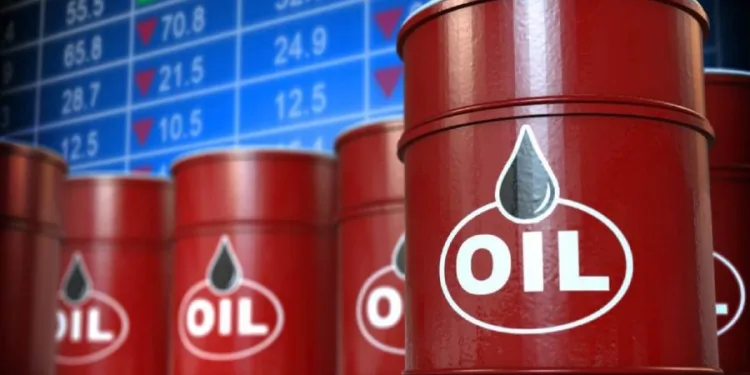Why Big Oil is Still Gushing Profits Despite Low Oil Prices
Oil markets have been volatile over the past couple of weeks, driven by a series of geopolitical developments including new U.S. sanctions on Russian energy, coupled with a fragile cease-fire in Gaza. Oil prices remain well below recent highs, with both Brent and WTI crude trading ~$15/bbl below their 52-week peak. Weak oil prices have taken a toll on the bottom lines of oil and gas companies, with the energy sector reporting third-quarter earnings growth at -0.5%, with only the Communication Services sector reporting lower growth at -7.1%. Both sectors grew well below the market average growth clip of 13.1% for the quarter. The energy sector is also reporting the lowest revenue growth clip of all 11 U.S. market sectors at 1.0%, compared to the S&P 500 average at 8.3%.
Big Oil companies have, however, been faring better-than-expected, with many reporting lower but still robust profits. Interestingly, these companies have been defying expectations to cut production amid lower oil prices and have continued ramping up oil output, helping offset some of the decline in oil prices. Exxon Mobil (NYSE:XOM) reported Q3 earnings of $7.54 billion, 12.4% lower from a year ago while revenue of $5.3 billion represented a 5.3% Y/Y decline. Exxon’s earnings in the first nine months clocked in at $22.3 billion, representing a 14.3% decline from the previous year’s corresponding period. The four Big Oil companies, namely Exxon, Chevron (NYSE:CVX), Shell (NYSE:SHEL), and TotalEnergies (NYSE:TTE) realized more than $21 billion in combined net income in the third quarter, a remarkable haul after oil prices declined more than 20% from the previous year.
There’s a method to the madness though. Exxon reported an additional $2.2 billion in structural cost savings in the third quarter, and has now surpassed $14 billion in cumulative cost savings since 2019. The company is targeting more than $18 billion in cumulative cost savings by the end of 2030. The company is able to achieve these kinds of savings through automation, supply chain optimization and improvements in operational technology. Exxon’s earnings breakeven point is now $10-15 per barrel lower compared to the situation five years ago, making the company much more resilient to falling oil prices. Exxon estimates that its portfolio-weighted breakeven is now $40-42 per barrel, giving the company a healthy margin buffer even at $60 oil. Further, Exxon remains confident of its ability to generate profits in the current environment, and has increased hydrocarbons production to 4.7 million oil-equivalent barrels per day (boe/d), including nearly 1.7 million boe/d from the Permian and more than 700,000 boe/d from Guyana. Meanwhile, Exxon brought the Yellowtail project online in the third quarter, four months ahead of schedule. Yellowtail production is expected to clock in at 250,000 boe/d, increasing total Guyana output to over 900,000 boe/d.
The story is pretty much the same at Chevron. The United States’ second largest oil company posted record global production of 4.09 million boe/d, up 21%Y/Y, including a 27% Y/Y increase in U.S. production to a record 2.04 million boe/d. Chevron was able to achieve this despite deploying fewer drilling rigs as well as fewer completion spreads, demonstrating strong operating leverage. Chevron saw Q3 2025 net profit fall to $3.54 billion, from $4.49 billion in Q3 2024, while earnings fell to or $1.82/share from $2.48/share in the year-earlier quarter. However, revenues were only marginally lower at $48.17 billion from $48.93 billion a year ago, with increased production helping offset lower crude prices.
That said, European oil majors are able to leverage volatile oil markets in a way their U.S. counterparts are not by deploying one trick: oil trading. Shell is the world’s largest oil trader, with a trading desk bigger than even Trafigura’s. Last term, the company reported that its trading divisions posted “significantly higher optimization results.” Recent sanctions on Russia’s energy giant Rosneft and Lukoil created significant volatility and price dislocations in regional markets, allowing the likes of Shell to capture those spreads. Whereas Shell does not break out specific earnings, recent court filings revealed that the company’s U.S. oil trading business generates about $1 billion annually, making up a significant portion of the company’s U.S. pre-tax profits. Similarly, TotalEnergies’ integrated power and gas trading segment generated $800 million in profits in the third quarter, up nearly 10% from the second quarter.
Exxon and Chevron do engage in oil trading, but traditionally they have done so on a smaller scale and with a more risk-averse approach compared to European oil majors like Shell. Their trading activities have historically been focused on logistics and balancing their own integrated systems rather than seeking large speculative profits from market volatility.
Finally, Big Oil has continued with its new operating strategy of cost discipline and returning cash to shareholders. ExxonMobil returned $4.2 billion in dividends and $5.1 billion in share buybacks in the third quarter, with the hefty buybacks helping prop earnings. Meanwhile, Shell has announced buybacks exceeding $3 billion for 16 straight quarters while Chevron and TotalEnergies distributed $6 billion and $4.5 billion, respectively.








